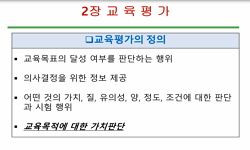연구목적: 본 연구에서는 경증 목 손상의 중증도에 영향을 미치는 요인을 분석하고 경미한 교통사고에서 탑승자의 경증 목 손상 여부를 예측할 수 있는 모델을 개발하고자 한다. 연구방법: 2...
http://chineseinput.net/에서 pinyin(병음)방식으로 중국어를 변환할 수 있습니다.
변환된 중국어를 복사하여 사용하시면 됩니다.
- 中文 을 입력하시려면 zhongwen을 입력하시고 space를누르시면됩니다.
- 北京 을 입력하시려면 beijing을 입력하시고 space를 누르시면 됩니다.
(A) predictive model to analyze factors affecting the presence of mild whiplash-associated disorders in minor motor vehicle crashes based on the Korean in-depth accidents study (KIDAS) database
한글로보기https://www.riss.kr/link?id=T15079307
- 저자
-
발행사항
[Seoul] : Graduate School, Yonsei University, 2019
-
학위논문사항
학위논문(박사) -- Graduate School, Yonsei University , Department of Medicine , 2019.2
-
발행연도
2019
-
작성언어
영어
- 주제어
-
발행국(도시)
서울
-
기타서명
한국형 자동차사고 심층분석 조사 데이터베이스를 기반으로 한 경미한 교통사고에서 탑승자의 경증 목 손상 예측 모델 개발
-
형태사항
v, 47장 : 삽화 ; 26 cm
-
일반주기명
지도교수: Kang Hyun Lee
-
UCI식별코드
I804:11046-000000518302
- 소장기관
-
0
상세조회 -
0
다운로드
부가정보
국문 초록 (Abstract)
연구방법: 2011년 1월부터 2017년 6월 사이에 네 곳의 권역응급의료센터에서 수집한 한국형 자동차사고 심층분석 조사자료 데이터베이스를 사용하였다. 차량의 파손 정보는 사고차량을 실사고 조사하면서 촬영한 후 collision deformation classification (CDC) code를 이용하여 획득하였고, 차량탑승자의 상해 정보는 약식상해등급(Abbreviated Injury Scale, AIS), 최대약식상해등급(Maximum AIS), 손상중증척도(Injury Severity Score, ISS)를 이용하여 획득하였다. 환자의 통증 호소와 의료진의 진단을 바탕으로 Quebec Task Force 분류법을 사용하여 목 손상에 대해 총 다섯 단계(QTF 0-4)로 분류할 수 있다. 본 연구에서는 QTF 1에 속하는 군을 경증 목 손상으로 정의하였고, QTF 0을 손상이 없는 군으로 정의하였다. 2011년에서 2016년까지의 KIDAS 데이터를 이용하여 경증 목 손상 발생에 영향을 주는 요인을 분석하였고 로지스틱 회귀 분석을 통해 예측모델을 도출하였다. 전체 데이터의 90%를 사용하여 예측모델을 도출하고 나머지 10%의 데이터로 검증하는 bootstrapping 방법을 무작위로 300번 수행하여 내적타당도를 분석하였고, 예측을 위한 조건을 충족시키는 2017년 KIDAS 데이터베이스의 13명의 탑승자 데이터에 적용하여 외적타당도를 분석하였다. 결과: 2011년부터 2016년까지 수집된 KIDAS 데이터베이스의 2,629명의 탑승자 중 제외조건들을 적용한 후 459명의 탑승자 데이터를 이용하여 예측모델을 개발하였다. 로지스틱 회귀 분석을 이용하여 성별, 나이, BMI, 차량종류, 안전벨트 착용여부, 차량탑승위치, 충돌유형, 차량함입정도를 선택한 후 예측모델을 도출하였다. 이 예측모델은 실제 경증 목 손상을 예측하는데 있어 65.5%의 설명력을 가졌다 (C-statistics: 0.655). 2017 KIDAS 데이터베이스를 사용하여 예측모델의 외적타당도 분석 결과, 민감도는 0.500, 특이도는 0.692, 정확도는 0.692이었다.
결론: 본 연구에서 도출된 예측모델은 경증 목 손상 여부를 판단할 수 있다는 점에서 의미 있는 결과를 제공하였다. 그러나 경미한 교통사고에서 경증 목 손상에 영향을 주는 요인이 더 있을 것으로 판단하기 때문에, 본 연구의 결과를 바탕으로 공학적인 영향요인, 사회학적인 영향요인 등을 추가하여 좀 더 정확도 높은 예측모델을 발전시킬 수 있다.
연구목적: 본 연구에서는 경증 목 손상의 중증도에 영향을 미치는 요인을 분석하고 경미한 교통사고에서 탑승자의 경증 목 손상 여부를 예측할 수 있는 모델을 개발하고자 한다.
연구방법: 2011년 1월부터 2017년 6월 사이에 네 곳의 권역응급의료센터에서 수집한 한국형 자동차사고 심층분석 조사자료 데이터베이스를 사용하였다. 차량의 파손 정보는 사고차량을 실사고 조사하면서 촬영한 후 collision deformation classification (CDC) code를 이용하여 획득하였고, 차량탑승자의 상해 정보는 약식상해등급(Abbreviated Injury Scale, AIS), 최대약식상해등급(Maximum AIS), 손상중증척도(Injury Severity Score, ISS)를 이용하여 획득하였다. 환자의 통증 호소와 의료진의 진단을 바탕으로 Quebec Task Force 분류법을 사용하여 목 손상에 대해 총 다섯 단계(QTF 0-4)로 분류할 수 있다. 본 연구에서는 QTF 1에 속하는 군을 경증 목 손상으로 정의하였고, QTF 0을 손상이 없는 군으로 정의하였다. 2011년에서 2016년까지의 KIDAS 데이터를 이용하여 경증 목 손상 발생에 영향을 주는 요인을 분석하였고 로지스틱 회귀 분석을 통해 예측모델을 도출하였다. 전체 데이터의 90%를 사용하여 예측모델을 도출하고 나머지 10%의 데이터로 검증하는 bootstrapping 방법을 무작위로 300번 수행하여 내적타당도를 분석하였고, 예측을 위한 조건을 충족시키는 2017년 KIDAS 데이터베이스의 13명의 탑승자 데이터에 적용하여 외적타당도를 분석하였다. 결과: 2011년부터 2016년까지 수집된 KIDAS 데이터베이스의 2,629명의 탑승자 중 제외조건들을 적용한 후 459명의 탑승자 데이터를 이용하여 예측모델을 개발하였다. 로지스틱 회귀 분석을 이용하여 성별, 나이, BMI, 차량종류, 안전벨트 착용여부, 차량탑승위치, 충돌유형, 차량함입정도를 선택한 후 예측모델을 도출하였다. 이 예측모델은 실제 경증 목 손상을 예측하는데 있어 65.5%의 설명력을 가졌다 (C-statistics: 0.655). 2017 KIDAS 데이터베이스를 사용하여 예측모델의 외적타당도 분석 결과, 민감도는 0.500, 특이도는 0.692, 정확도는 0.692이었다.
결론: 본 연구에서 도출된 예측모델은 경증 목 손상 여부를 판단할 수 있다는 점에서 의미 있는 결과를 제공하였다. 그러나 경미한 교통사고에서 경증 목 손상에 영향을 주는 요인이 더 있을 것으로 판단하기 때문에, 본 연구의 결과를 바탕으로 공학적인 영향요인, 사회학적인 영향요인 등을 추가하여 좀 더 정확도 높은 예측모델을 발전시킬 수 있다.
다국어 초록 (Multilingual Abstract)
Methods: From 2011 to 2017, we used Korean In-Depth Accident Study (KIDAS) database which was collected from four regional emergency centers. The Collision Deformation Classification (CDC) code was obtained as vehicle’s damage information, and AIS, MAIS, and ISS were used as occupant’s injury information. The degree of WAD was determined using the Quebec Task Force (QTF) classification, comprised of 5 stages (QTF 0–4), depending on the occupant’s pain and the physician’s findings. QTF 1 was defined as mild WAD, and we used QTF 0 to define those uninjured. For KIDAS data between 2011 and 2016, a logistic regression model was used to identify factors affecting the occurrence of mild WAD and a predictive model was constructed. Internal validity was estimated using random bootstrapping, and the external validity of the derived predictive model was assessed using the 13 MVC occupants from the 2017 KIDAS database meeting our inclusion criteria. Among the 137 MVC occupants from 2017 KIDAS database for the analysis of the external validity of the derived predictive model, the predictive model was verified for 13 MVC occupants.
Results: Of the 2,629 occupants in the KIDAS database collected from 2011 to 2016, after applying several exclusion conditions, 459 occupants were used for developing the predictive model. Logistic regression analysis was used to derive a predictive model based on sex, age, body mass index, type of vehicle, belt status, seating row, crush type, and crush extent. This predictive model had an explanatory power of 65.5% to determine an actual QTF of 0 and 1 (C-statistics: 0.655). As a result of the external validity analysis of the predictive model using data from the 2017 KIDAS database (N=13), sensitivity, specificity, and accuracy were 0.500, 0.857, and 0.692, respectively.
Conclusions: Using the predictive model, the results of the external validity analysis showed low sensitivity but high specificity. This predictive model provided meaningful results, with a high success rate for determining no injury to an occupant. Given our study results, future research is needed to create a more accurate predictive model that includes relevant technical and sociological factors.
Objectives: We aimed to analyze factors affecting the severity of mild whiplash-associated disorders (WAD) and to develop a predictive model to evaluate the presence of mild WAD in minor motor vehicle crashes (MVCs). Methods: From 2011 to 2017, we use...
Objectives: We aimed to analyze factors affecting the severity of mild whiplash-associated disorders (WAD) and to develop a predictive model to evaluate the presence of mild WAD in minor motor vehicle crashes (MVCs).
Methods: From 2011 to 2017, we used Korean In-Depth Accident Study (KIDAS) database which was collected from four regional emergency centers. The Collision Deformation Classification (CDC) code was obtained as vehicle’s damage information, and AIS, MAIS, and ISS were used as occupant’s injury information. The degree of WAD was determined using the Quebec Task Force (QTF) classification, comprised of 5 stages (QTF 0–4), depending on the occupant’s pain and the physician’s findings. QTF 1 was defined as mild WAD, and we used QTF 0 to define those uninjured. For KIDAS data between 2011 and 2016, a logistic regression model was used to identify factors affecting the occurrence of mild WAD and a predictive model was constructed. Internal validity was estimated using random bootstrapping, and the external validity of the derived predictive model was assessed using the 13 MVC occupants from the 2017 KIDAS database meeting our inclusion criteria. Among the 137 MVC occupants from 2017 KIDAS database for the analysis of the external validity of the derived predictive model, the predictive model was verified for 13 MVC occupants.
Results: Of the 2,629 occupants in the KIDAS database collected from 2011 to 2016, after applying several exclusion conditions, 459 occupants were used for developing the predictive model. Logistic regression analysis was used to derive a predictive model based on sex, age, body mass index, type of vehicle, belt status, seating row, crush type, and crush extent. This predictive model had an explanatory power of 65.5% to determine an actual QTF of 0 and 1 (C-statistics: 0.655). As a result of the external validity analysis of the predictive model using data from the 2017 KIDAS database (N=13), sensitivity, specificity, and accuracy were 0.500, 0.857, and 0.692, respectively.
Conclusions: Using the predictive model, the results of the external validity analysis showed low sensitivity but high specificity. This predictive model provided meaningful results, with a high success rate for determining no injury to an occupant. Given our study results, future research is needed to create a more accurate predictive model that includes relevant technical and sociological factors.










